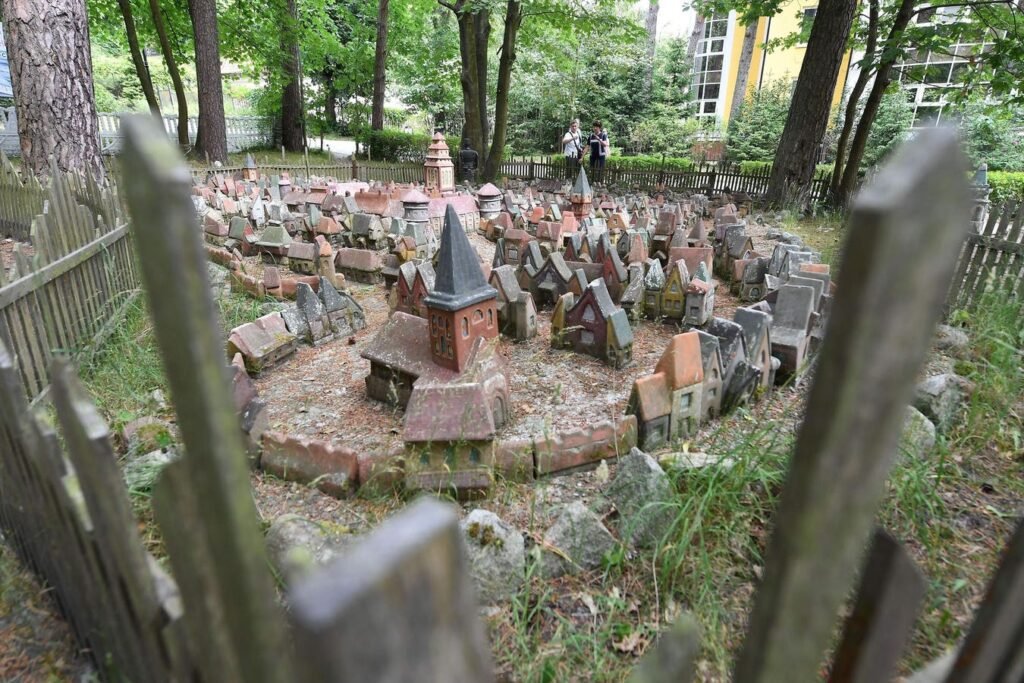Tourists are exploring a miniature replica of medieval Königsberg (today’s Kaliningrad) from the 16th century. … [+]
A new study of 919 European cities has found that smaller, more densely populated cities not only have less green space than less densely populated urban areas, but also suffer from poorer air quality (due to higher nitrogen dioxide emissions from vehicles) and higher mortality rates.
The results of the study are: The Lancet Planetary HealthMoreover, they highlight that although compact European cities have significantly lower carbon dioxide emissions, they suffer from less green space and their residents are much more susceptible to the heat island effect. “However, sprawling cities with low population density also face challenges, particularly related to longer travel distances, higher carbon dioxide emissions, greater car dependency, a greater variety of destinations in close proximity and social isolation,” the authors stress.
Cities are largely concrete jungles, with every surface covered in concrete or asphalt, which means they absorb and retain more heat in the summer, making them hotter than the countryside. The only way to combat the urban heat island effect is to increase green spaces like parks and gardens, protect street trees, and plant more street trees.
“Compact cities have many conceptual benefits, including reduced automobile dependency, walkability, proximity to services, increased social interaction, and a greater sense of community,” the authors write in their research paper. “However, in their current configuration, compact cities are highly dense and likely serve as economic hubs that attract many commuters seeking educational and employment opportunities. Moreover, travel within compact cities still relies heavily on automobile transportation.”
“Our analysis reveals that compact cities have significantly higher traffic volumes compared to all other urban forms, which is consistent with the high nitrogen dioxide emissions observed in these cities,” the researchers added. “In this sense, current European compact cities should be understood as being in a transitional phase towards an optimal form, currently combining some positive characteristics (such as proximity to services) with challenges such as densification, mobility, traffic flow management, poor air quality and a lack of green and natural spaces.”
ISGlobal researcher Tamara Yunman, one of the lead authors, and her colleagues proposed several measures that could help reduce pollution in compact cities and create cooler environments for their residents.
In terms of density, they explained that a maximum of 175 housing units per hectare is needed so that people do not feel socially isolated and can develop a sense of community while living in walkable cities with easy access to essential services. The authors said that promoting quality public transport and reducing reliance on cars can reduce traffic and air pollution levels. One solution that could have enormous health benefits is to create car-free neighborhoods in large cities, they say.
“Compact cities can be used to introduce new urban models that promote the creation and better use of public spaces for citizens. Such approaches – such as the introduction of superblocks across Barcelona, Spain, the development of low-traffic neighbourhoods in London, and the creation of car-free zones in Hamburg and Freiburg – can have positive impacts on the environment and health,” the authors write.
Integrating green spaces when planning infrastructure projects is another important solution that more urban areas can adopt.
“In tightly enclosed commercial districts, the introduction of green roofs and green façades can reduce surface water runoff. Sky gardens can compensate for the lack of green space on the ground, and street trees can mitigate carbon emissions and improve the microclimate. Also, the introduction of small gardens in public, industrial, educational and institutional spaces can contribute to maintaining biodiversity as part of urban green spaces,” the researchers added.




